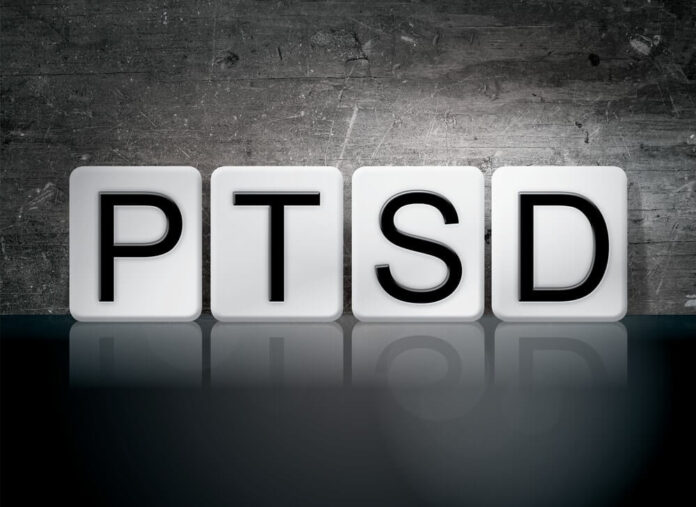
Being able to evaluate to what extent PTSD influences one’s life is one of the keys to treat affected and aid them with reestablishing balance in their lives. Since PTSD was not considered to be an issue until recent times, many persons having this type of disorder were neglected by the public. Hopefully, things have changed hence the scrupulosity of the people has shifted in the right direction and hopefully, the trend will continue to be on the rise.
The percentage of impact PTSD has on the life of the individual varies from person to person, and the manifestation of certain symptoms, or group of symptoms, helps us determine to which degree has one’s wellbeing been violated. To do so, we shall discuss what the disorder is, what can be done about it, and what types of manifestations it has, and how to deal with them.
What is PTSD?
The abbreviation of PTSD stands for post-traumatic stress disorder. The requirement for one to suffer from this type of disorder is to survive a certain type of trauma. The experience of trauma may strike the individual in many different modus, while the different types of trauma may work together and deteriorate one’s wellbeing.
The trauma may imply events such are witnessing or being a victim of a natural disaster, sexual assault, murder, traffic accident, workplace accident with fatal outcome, loss of a loved one, etc… It is expected for a person to feel exhausted and frightened after some traumatic event and to feel the consequences of being at the wrong place at the wrong time, but should the circumstances not improve, we are dealing with something more serious than it may seem at first glance.
The persons that suffer constant nightmares related to a traumatic event, experience idleness and suicidal intentions, relive horrid situations followed by vivid and disturbing flashbacks, become aggressive towards their nearest for no obvious reasons, are showing the signs of PTSD and should visit the suitable medical facility that may provide them with suitable care and prevent more damage to take place. Considering the loss of a loved one, the cases where a person is on the death bed for six months and passes away ultimately, are not associated with trauma-affected persons.
The experience of PTSD can be explained as a prolonged feeling of shock after a certain event. While the healthy person realizes what happened after a traumatic event took place, a PTSD affected person remains in the state of shock, being unable to perceive the event without affection, therefore reliving the situation over and over.
Victims of traffic collisions are often affected by PTSD. There are numerous examples of people being left with a limb or suffering severe damage to different parts of the body, not to mention how badly can witnessing a fatal outcome in a traffic accident impact one’s wellbeing. After suffering from PTSD persons are provided help in terms of compensation for the damage they have suffered. They are often in need to search for the help of PTSD compensation lawyers since the injured party does not receive help without previously asking for it by legal means. You can read more about this topic at FoyleLegal.com
Veterans and PTSD

One of the vocations where PTSD is, unfortunately, a common occurrence is the army. Namely, a vast number of veterans experience the downside of this noble profession. More and more participants in worldwide conflicts come back from the field with the symptoms of PTSD, and sadly, a great majority keeps experiencing them after a few months, therefore being the victims of this limiting disorder. The consequences of a shock may be that high that they even disenable the one’s ability to work.
There are four main types of PTSD manifestation. Re-experiencing the inner memories from the traumatic event, everlasting nightmares, flashbacks, and extreme psychic and visceral response generated on the notion of the traumatic experience. The second symptom includes avoidance and numbing, showing as a lack of memory regarding the event, idleness concerning the near future, loss of will to live, and general confusion. Also, hyperarousal is one of the main indicators of PTSD. That includes the inability to sleep, constant tizzy feeling, frequent acts of aggression, and self-destructive demeanor. Finally, pessimistic thoughts and constant mood shifts, resulting in feelings of abandonment, inability to focus, excessive sadness and depression, also self-blaming and shame sensations.
VA

US Department of VA has provided a chart that enables us to determine the percentage PTSD makes in one’s disability to function. For example, veterans may be rated from 0% to 100%. There are certain subgroups deployed within those percentages, with their margins standing at 10%, 30%, 50%, 70%, and 100%. The majority of this partition includes veterans with a 70% expressed disability.
To clarify the position of the margins, certain aspects should be more clearly explained. Namely, a person may expose symptoms that could qualify him or her for a 70% section, but not within a certain time frame. In other words, they do not experience certain symptoms too often. Sadly, this is what shows that this inning is not ideal because a person with suicidal tendencies does not belong in a 70% section if the suicidal feeling does not happen frequently.
On the other hand, a person suffering from more than one symptom categorized into different sections will be assigned to a percentage section that equals the average value of those symptoms. That is why professional support of a legal solicitor is advised when both appealing and applying for disability assessment regarding the PTSD.
Hopefully, things shall unfold for the better and the ones affected with PTSD will be able to rehabilitate and get a grip on their lives. PTSD does not only affect the one with the disorder, but also their family, friends, business, and other relations. In fact, it causes the entire community to be affected. The sooner we realize this is a joint issue, the better future we will be able to ensure not only for the directly affected but for the society in general.











